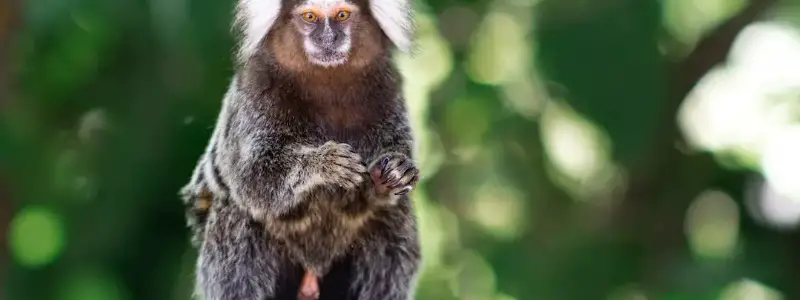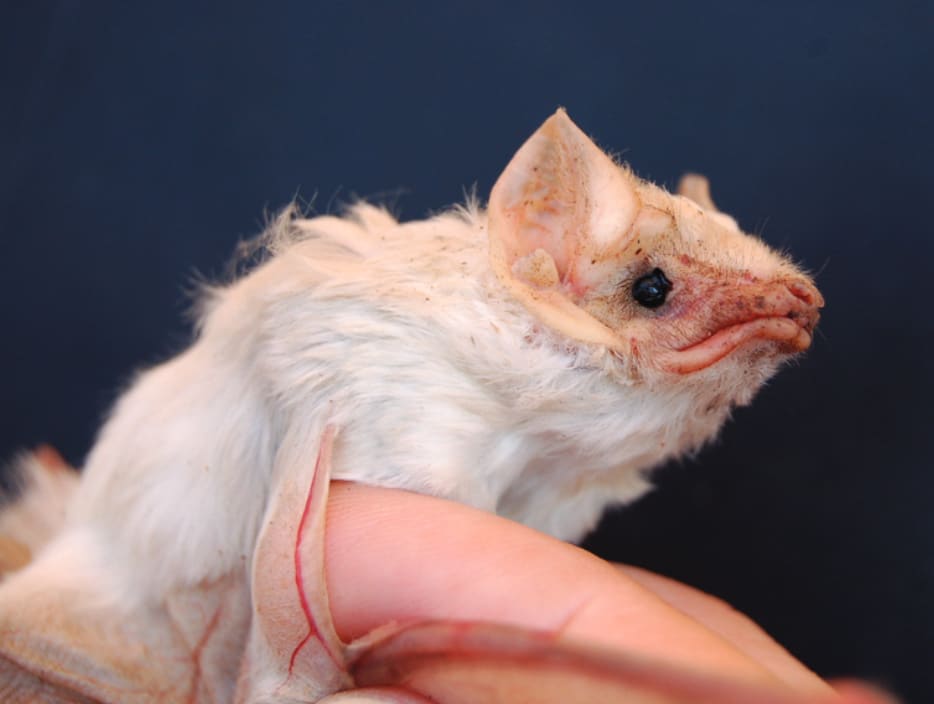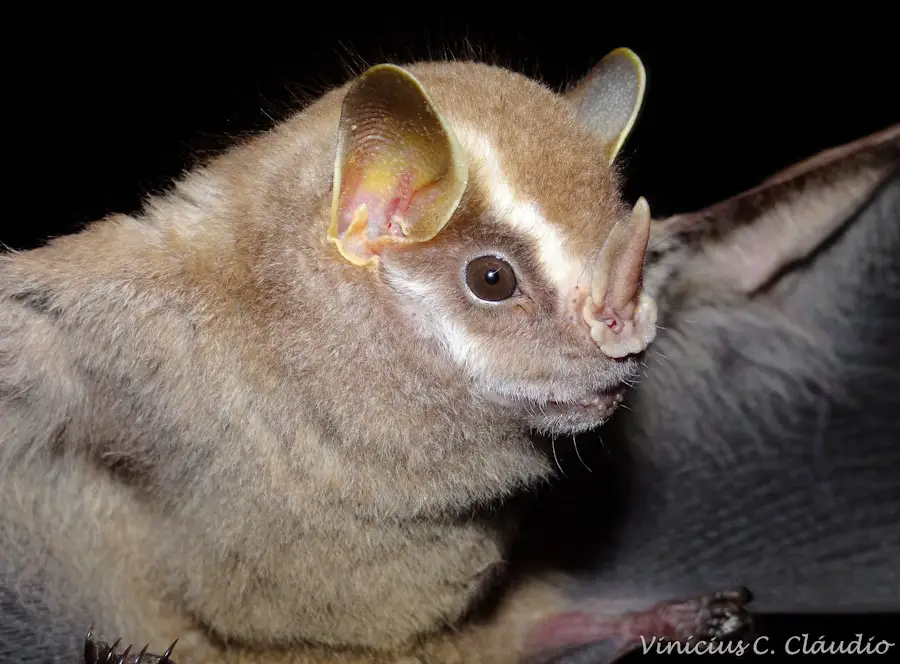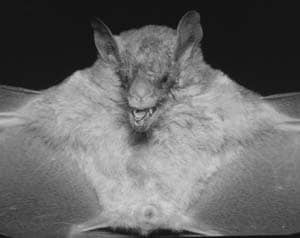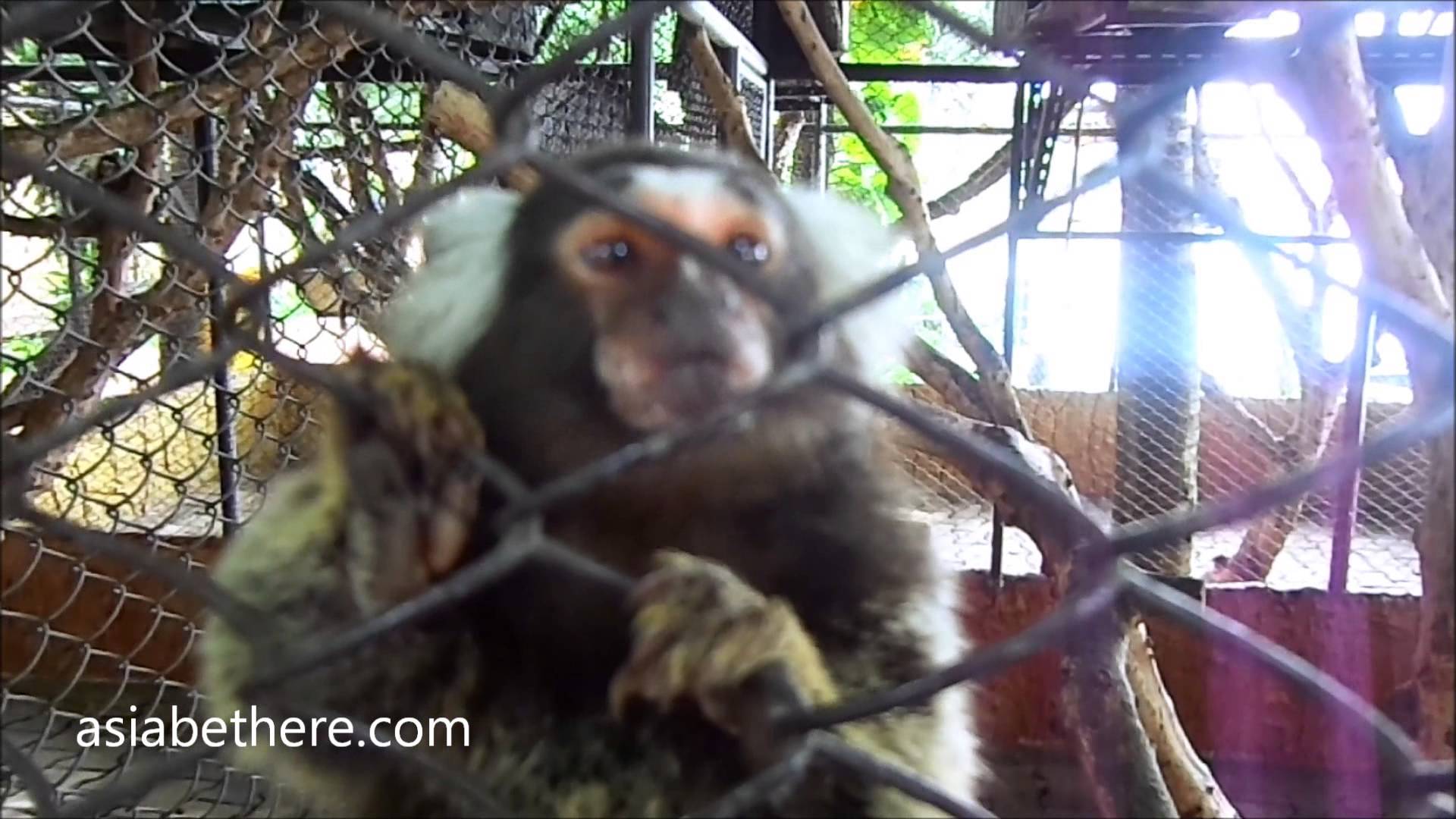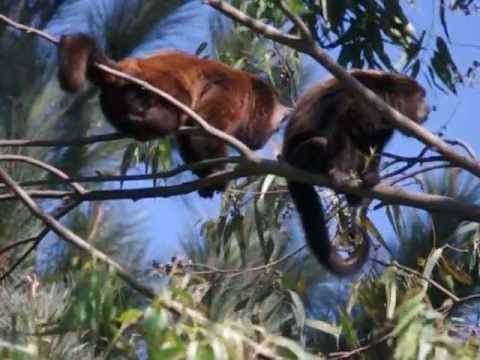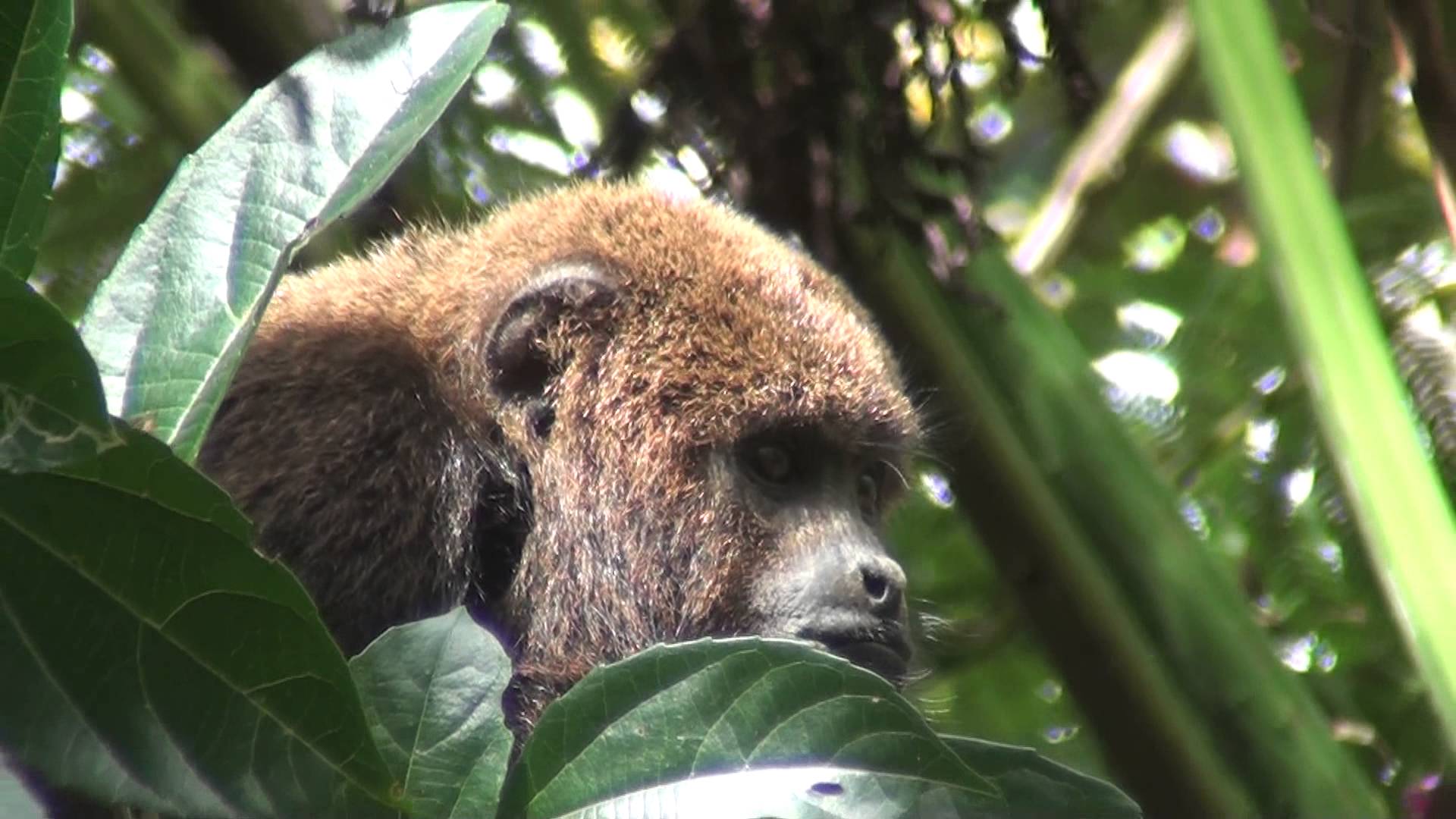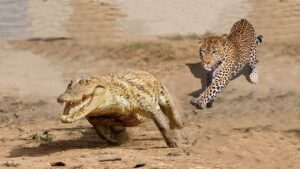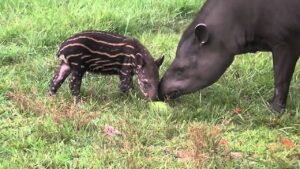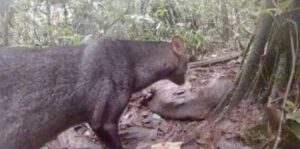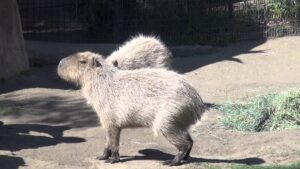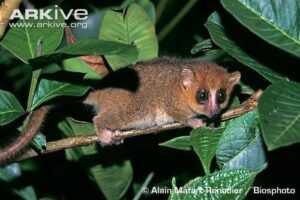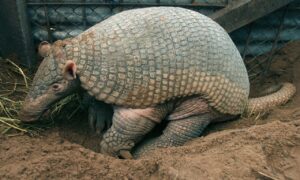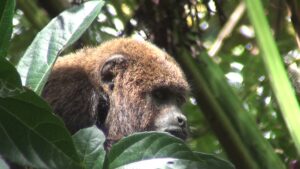Brazil Animals
Rainforest animals form an integral part of tropical forests which contain the highest levels of biodiversity (a number and variety of species in a habitat) in the world: about half of all the animal and plant species[1]. It is difficult to imagine rainforests without animals in them!
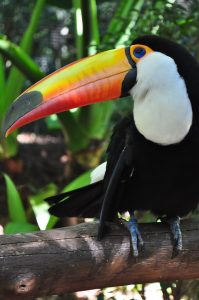
The Brazilian Rainforest is a very complex ecosystem. It provides an environment for endless interactions/food webs between animals, plants, and other living organisms (such as fungi, for example), many of which heavily depend on each other.
Animal diversity is so rich in Brazil because it is a perfect home providing perfect conditions (such as an abundance of rainfall and warm temperatures throughout the year) to thousands of different life forms that may not survive in other, harsher parts of our planet.
Bats of Brazil
Exhaustive lists of Brazilian bats have been cataloged since the late 19th century, with striking variation in the criteria for species inclusion and use of terminology. To update the list of existing bat species that reside in Brazil, the Brazilian Bat Research Society founded the Committee of the List of Brazilian Bats. The resulting list of this Committee contains nine families, 68 genera, and 178 species with documented findings in Brazil, along with nomenclatural annotations. Since the beginning of the 21st century, 35 new bat species were discovered in Brazil, and we anticipate that more species will be found over the next few years.
Greater Ghost Bat (Diclidurus ingens)
The Greater Ghost Bat is a large and very territorial bat species that mainly inhabits rainforests across South East Asia. It has a wingspan that…
Brazilian Big-eyed Bat (Chiroderma doriae)
The big-eyed bat is a lesser-known but fascinating member of the bat family, the genus Oryzomus. As its name suggests, it has relatively large eyes,…
Dekeyser’s Nectar Bat (Lonchophylla dekeyseri)
The Dekeyser’s Nectar Bat is endemic to Brazil. It is considered to be a vulnerable species. The Dekeyser’s Nectar Bat inhabits caves in dry forests….
Brazilian Monkeys
There are so many kinds of monkeys in Brazil that scientists have not yet identified each of them. In fact, in 2009 a new species, Mura’s tamarin, was found in a distant part of Brazil—and it’s already estimated to be an endangered species because of habitat destruction due to the logging and burning of the rainforest.
One thing many monkeys in the Brazilian rain forest—and throughout South and Central America—have in general is a prehensile tail. “New World” primates use their long tails as a fifth leg or arm to envelop nearby tree branches. The “Old World” monkeys of the Asian and African rain forests lack this beneficial adaptation.
Buffy-headed Marmoset (Callithrix flaviceps)
The Buffy-headed Marmoset (Callithrix aurita) is a small primate native to South America, most commonly found in the tropical forests of the Amazon rainforest. It has a distinctive gray body…
Howler Monkey (Alouatta fusca)
Can you imagine someone hearing you holler from three kilometer away? Howler Monkeys have the loudest sound of any land animal, and it can be heard for three kilometers because…
Brown Howler Monkey (Alouatta guariba)
Brown Howler The Brown Howler Monkey, scientifically known as Alouatta guariba, is a fascinating species of New World monkey native to South America. These primates are known for their loud…
Amphibians
Brazil is home to almost 1,000 known species of amphibians, representing 13% of the world’s known species. Most of the amphibians live in the Amazon rainforest, Atlantic Forest, Pantanal, and Cerrado. Sao Paulo has the most significant number of Amphibians in the nation at 28% and in the world at 4% of the world’s amphibians.
Poison Dart Frog (Dendrobates tinctorius)
Poison dart frogs are probably some of the most amazing and brightly colored rainforest animals. These animals belong to the family of frogs Dendrobatidae. As of August 2006, there were…
Other Brazilian Mammals
In the last 20 years, various efforts had been made to assess the diversity of mammals in Brazil. There are greater than 700 varieties of mammals in Brazil, and according to the Chico Mendes Institute for Biodiversity Conservation and Ministry of the Environment, about 110 species and subspecies are threatened and one is already extinct. A key issue in the establishment of diversity is the proper identification of the species.
There are around 1.5 mln classified animal species in the world. [2] In simplified terms, we can divide them into invertebrate and vertebrate animals.

Invertebrates are the most numerous animals and are 95% of all the species [3], with insects alone being the largest invertebrate animal group (900,000 species [4]).
However, it is the vertebrate animals (around 41,000 species [5]) that we know most about and that have been studied in a lot more detail.
Take the total number of classified animal species mentioned above 1.5 mln), divide it by 2 (because tropical forests contain at least half of all the Earth’s species), and you will get 750,000 species – a very roughly quantified estimation of animal diversity in the tropics (though we wouldn’t attach too much meaning to this figure).
Charismatic Tropical Animals
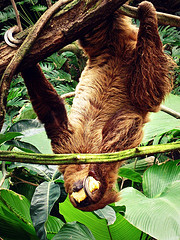
There are thousands and thousands of fascinating tropical animals that we could talk about endlessly.
Jaguar, capybara, tapir, sloth, parrot, green anaconda, tiger, agouti, mountain gorilla, orangutan, to name just a few, come to mind when we think of rainforest animals.
In rainforests, you can find animals of virtually any color and size (from the tiny strawberry poison dart frog to the huge elephant).
Some animal species are expected to live in all rainforests (such as pigeons) whereas others live only in certain tropical areas – these are called “endemic” species (birds of paradise, for example, are found only in New Guinea and Australia). [6]
Feel free to browse this website and learn more about many charismatic tropical creatures.
Endangered Animals of the Rainforests
Unfortunately, the most recent rates of human development led to the destruction of the rainforest habitat for many animals. Rainforest destruction is probably the main cause of biodiversity loss.
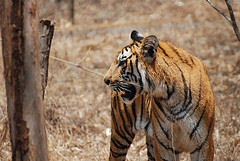
But rainforest degradation as a habitat for animals (by way of environmental pollution, for example) is also a problem, albeit a less obvious one.
There are also other factors posing serious threats to the survival of many animal species (such as poaching).
As a result, we have witnessed a sharp increase in the number of endangered animals in most tropical forests of the world. In extreme cases, such disregard for animal welfare led to animal extinction.
Such a situation is highlighting the real need for endangered species conservation. And we are currently witnessing many efforts to reverse this process of losing tropical biodiversity (ex., see how this is being done with jaguar conservation).
References for the Brazilian Rainforest Animals
- Forest. (2004). In The Columbia Encyclopedia (6th ed.). New York: Columbia University Press. Retrieved October 15, 2007, from Questia.com
- Animal. (2004). In The Columbia Encyclopedia (6th ed.). New York: Columbia University Press. Retrieved October 15, 2007, from Questia.com
- Ibid.
- Biological Diversity. (2004). In The Columbia Encyclopedia (6th ed.). New York: Columbia University Press. Retrieved October 15, 2007, from Questia.com
- Ibid.
- Tropical Forest. (2007). In Encyclopedia Britannica. Retrieved October 15, 2007, from Encyclopedia Britannica Online: http://www.britannica.com/eb/article-70770
- Brazil Travel Guide. From Rio de Janeiro to stunning beach resorts. Get Brazil tips and inspiration plus book day trips, packages, and tours.

